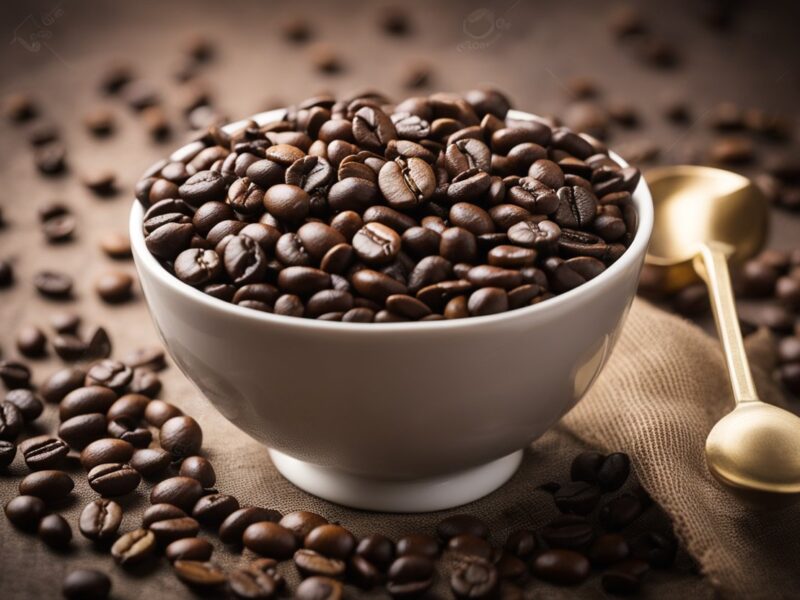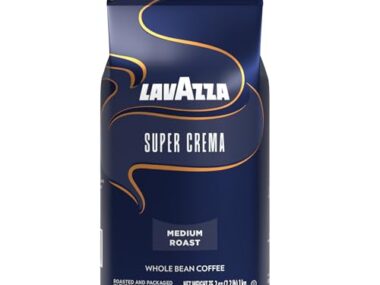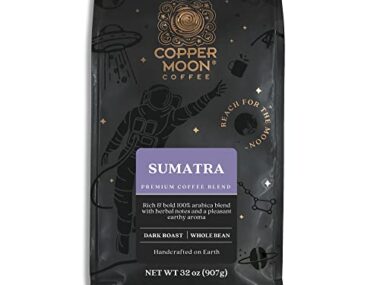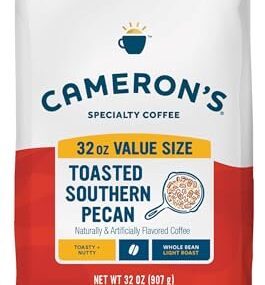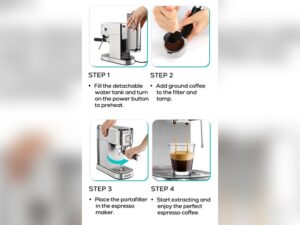To make a great cup of coffee, you need the right amount of coffee beans. Generally, you need about 10 grams of coffee beans for a standard 6-ounce cup. Understanding how many coffee beans per cup helps you brew consistent and delicious coffee every time.
But why is this the case? Coffee lovers know the joy of the perfect cup. The flavor, aroma, and strength all depend on the amount of coffee used. Too many beans can make the coffee too strong and bitter. Too few can make it weak and tasteless.
Understanding the right amount of coffee beans per cup can help you make better coffee every time. This guide will explore the ideal coffee-to-water ratio and offer tips for making the best cup of coffee. Get ready to enjoy a perfect brew!
Coffee Bean Basics
Understanding how many coffee beans per cup is essential for brewing the perfect cup of coffee. Knowing the basics of coffee beans helps in achieving the right balance of flavor and strength. Let’s delve into the essentials of coffee beans to make every cup a delightful experience.
Types Of Coffee Beans
There are four main types of coffee beans, each with unique characteristics that affect the flavor and aroma of your coffee. Knowing these types helps in selecting the right beans for your taste preferences.
- Arabica: The most popular type, known for its smooth and complex flavor. Grown at high altitudes, it has a balanced acidity.
- Robusta: Stronger and more bitter compared to Arabica. It has higher caffeine content and is often used in espresso blends.
- Liberica: Less common, with a woody and smoky flavor. It has a unique taste that stands out from other types.
- Excelsa: Often considered a variant of Liberica, it has a tart and fruity profile. It adds complexity to coffee blends.
Here’s a quick comparison of these types:
| Type | Flavor Profile | Growing Region |
|---|---|---|
| Arabica | Smooth, Sweet, Complex | High Altitudes (Latin America, Africa) |
| Robusta | Strong, Bitter, Earthy | Low Altitudes (Africa, Indonesia) |
| Liberica | Woody, Smoky, Bold | Philippines, Malaysia |
| Excelsa | Tart, Fruity, Complex | Southeast Asia |
Coffee Bean Anatomy
The anatomy of a coffee bean plays a crucial role in its flavor profile. Understanding the structure of a coffee bean helps in better appreciating the brewing process.
A coffee bean is composed of several layers:
- Silver Skin: The thin layer around the coffee seed. It usually comes off during roasting.
- Parchment: A papery layer that encases the bean. Removed during processing before roasting.
- Pulp: The fleshy part surrounding the parchment. Fermented and washed away during processing.
- Bean: The heart of the coffee cherry. This is what we roast and grind to make coffee.
Let’s break down the bean itself:
| Part | Description | Role in Flavor |
|---|---|---|
| Endosperm | Main part of the bean, containing sugars and proteins. | Contributes to sweetness and body. |
| Germ | Embryonic part of the seed. | Minor role in flavor, more significant in growth. |
| Silverskin | Thin layer that can remain after roasting. | Minimal impact, mostly removed. |
Each part of the coffee bean contributes to the final flavor. The endosperm is especially important as it contains the compounds that develop during roasting. This process brings out the rich flavors and aromas we enjoy in our coffee.
Measuring Coffee Beans
Introduction paragraph about How Many Coffee Beans Per Cup and Measuring Coffee Beans…
Measuring coffee beans is crucial for brewing a consistent and delicious cup of coffee. The right amount can enhance the flavor, while too much or too little can ruin the experience. Understanding the standard measurements and the differences between weight and volume can help you achieve that perfect cup every time.
Standard Measurements
Standard measurements for coffee beans help in brewing a balanced cup. A typical guideline is to use two tablespoons of coffee beans for every six ounces of water. This is often referred to as the “Golden Ratio” in coffee making.
Here are some common measurements for different coffee strengths:
- Mild: 1 tablespoon of coffee beans per 6 ounces of water
- Medium: 1.5 tablespoons of coffee beans per 6 ounces of water
- Strong: 2 tablespoons of coffee beans per 6 ounces of water
Using a coffee scoop can also be helpful. One level coffee scoop usually equals two tablespoons, making it easier to measure your beans accurately.
For those who prefer precision, measuring coffee beans by weight is an option. A standard method is to use 10 grams of coffee beans for every 6 ounces of water. This ensures consistency in every cup.
| Strength | Tablespoons of Beans | Grams of Beans |
|---|---|---|
| Mild | 1 | 5 |
| Medium | 1.5 | 7.5 |
| Strong | 2 | 10 |
Weight Vs. Volume
Weight and volume are two different ways to measure coffee beans. Each has its advantages.
Volume:
- Easy and quick
- Uses common kitchen tools like tablespoons and cups
- Works well for casual coffee drinkers
Weight:
- More accurate
- Uses a kitchen scale
- Ensures consistency in every cup
Volume measurements can vary due to the size and shape of the beans. A tablespoon of light, fluffy beans will weigh less than a tablespoon of dense, dark beans. This can lead to inconsistencies in flavor.
Measuring by weight eliminates these variations. Using a kitchen scale, you can measure the exact amount of coffee beans needed. For example, 10 grams of beans for a 6-ounce cup of coffee will always be the same, regardless of the bean size or type.
In summary, using weight is ideal for precision and consistency. Volume is convenient and quick but may not always yield the same results. Choose the method that best fits your needs and enjoy your perfect cup of coffee.
Brewing Methods
Understanding how many coffee beans per cup you need can significantly enhance your brewing experience. Different brewing methods require varying amounts of coffee beans to achieve the perfect cup. This section delves into three popular brewing methods: Drip Coffee, French Press, and Espresso. Each method has unique characteristics and bean requirements.
Drip Coffee
Drip coffee is one of the most common brewing methods used in households and cafes. This method involves pouring hot water over ground coffee beans, which then drip through a filter into a carafe. The amount of coffee beans you use can greatly affect the taste of your coffee.
For a standard drip coffee, the general rule is to use two tablespoons of coffee beans per six ounces of water. This ratio can be adjusted based on personal preference and the strength of the coffee desired. Here’s a simple guide:
- Light Coffee: 1 tablespoon of coffee beans per 6 ounces of water
- Medium Coffee: 1.5 tablespoons of coffee beans per 6 ounces of water
- Strong Coffee: 2 tablespoons of coffee beans per 6 ounces of water
The grind size for drip coffee should be medium, similar to granulated sugar. This allows the water to extract the flavors evenly. The brewing time typically ranges from 5 to 10 minutes.
| Water (oz) | Light Coffee (tbsp) | Medium Coffee (tbsp) | Strong Coffee (tbsp) |
|---|---|---|---|
| 6 | 1 | 1.5 | 2 |
| 12 | 2 | 3 | 4 |
| 24 | 4 | 6 | 8 |
French Press
The French Press method, also known as a press pot or plunger pot, is loved for its rich, full-bodied coffee. This method involves steeping coarsely ground coffee beans in hot water, then pressing a metal or plastic plunger through the grounds to separate them from the liquid.
For a French Press, the recommended ratio is one ounce of coffee beans (about 28 grams) per four cups of water (32 ounces). This can be broken down as follows:
- Light Coffee: 0.75 ounces of coffee beans per 32 ounces of water
- Medium Coffee: 1 ounce of coffee beans per 32 ounces of water
- Strong Coffee: 1.25 ounces of coffee beans per 32 ounces of water
The grind size should be coarse, resembling breadcrumbs. This prevents the coffee from becoming too bitter. The brewing time for a French Press is generally around 4 minutes. Here’s a quick reference table:
| Water (oz) | Light Coffee (oz) | Medium Coffee (oz) | Strong Coffee (oz) |
|---|---|---|---|
| 32 | 0.75 | 1 | 1.25 |
| 64 | 1.5 | 2 | 2.5 |
| 128 | 3 | 4 | 5 |
Espresso
Espresso is a concentrated form of coffee brewed by forcing a small amount of nearly boiling water through finely-ground coffee beans. This method requires precision and a specific amount of coffee beans to achieve the right flavor and strength.
For a single shot of espresso, the standard is to use 7 grams of coffee beans. For a double shot, use 14 grams. Here’s a quick guide:
- Single Shot: 7 grams of coffee beans
- Double Shot: 14 grams of coffee beans
The grind size for espresso should be very fine, similar to powdered sugar. This allows the water to pass through the beans quickly and extract the flavors efficiently. The brewing time for a single shot of espresso is typically around 25 to 30 seconds.
Here’s a handy table for reference:
| Shot Type | Grams of Coffee Beans |
|---|---|
| Single Shot | 7 grams |
| Double Shot | 14 grams |
Each brewing method requires a different amount of coffee beans to achieve the best flavor. By understanding these methods, you can make a perfect cup of coffee to suit your taste.
Bean-to-cup Ratios
Understanding the perfect bean-to-cup ratio is crucial for brewing a delicious cup of coffee. The number of coffee beans per cup can vary based on personal preference, brewing method, and desired strength. This guide will help you find the ideal balance for your perfect cup of coffee.
Common Ratios
The most common ratio for brewing coffee is known as the “Golden Ratio”. This ratio typically suggests using one to two tablespoons of coffee beans per six ounces of water. Here are some common ratios to consider:
- 1:15 Ratio: One part coffee to fifteen parts water. Ideal for a balanced cup.
- 1:17 Ratio: One part coffee to seventeen parts water. Great for a lighter brew.
- 1:12 Ratio: One part coffee to twelve parts water. Perfect for a stronger coffee.
To make it easier to understand, here’s a table that breaks down these ratios:
| Ratio | Coffee (grams) | Water (milliliters) |
|---|---|---|
| 1:15 | 20 | 300 |
| 1:17 | 20 | 340 |
| 1:12 | 20 | 240 |
Using these ratios helps ensure a consistent and delicious cup of coffee each time. Adjust the amount of coffee and water based on your preferences.
Adjusting For Strength
Adjusting the strength of your coffee is simple once you understand the basic ratios. If you prefer a stronger coffee, use more coffee beans. If you like it weaker, use fewer beans.
Here are some tips to adjust the strength:
- For stronger coffee: Use a 1:12 ratio. This means 20 grams of coffee to 240 milliliters of water.
- For weaker coffee: Use a 1:17 ratio. This means 20 grams of coffee to 340 milliliters of water.
Another method to adjust strength is to change the grind size. A finer grind will result in a stronger brew, while a coarser grind will produce a milder taste.
Here is a quick guide to grind sizes:
- Fine: Espresso
- Medium: Drip coffee makers
- Coarse: French press
Experiment with different ratios and grind sizes to find what suits your taste best. Each method and ratio can bring out unique flavors in your coffee.
Freshness Factors
When brewing coffee, the number of coffee beans per cup is crucial. But, the freshness of those beans can significantly impact the taste and quality of your coffee. Let’s explore the key freshness factors to ensure you get the best cup each time.
Roast Date Importance
The roast date of your coffee beans is vital. Freshly roasted beans provide richer flavor and aroma. Stale beans lose their oils and taste flat.
Here are some reasons why the roast date matters:
- Flavor Profile: Freshly roasted beans retain their unique flavors and aromas.
- Aroma: Fresh beans release more aromatic compounds, enhancing your coffee experience.
- Oils and Gasses: Fresh beans have intact oils and gasses, contributing to a richer taste and crema.
A good rule of thumb is to use coffee beans within 2 to 3 weeks of their roast date. This period ensures you capture the peak freshness and flavor of the beans.
| Time Since Roast | Recommended Use |
|---|---|
| 0-7 days | Resting period, not ideal for brewing |
| 7-21 days | Optimal freshness and flavor |
| 21-30 days | Still good, but declining in quality |
| 30+ days | Stale, with diminished flavor |
Storage Tips
Proper storage of coffee beans is crucial to maintain their freshness. Here are some tips to keep your beans fresh for longer:
- Avoid Air Exposure: Store beans in an airtight container to prevent oxidation.
- Keep Away from Light: Light can degrade coffee beans. Use opaque containers.
- Store in a Cool Place: Heat accelerates the staling process. Keep beans in a cool, dark place.
- Avoid Moisture: Moisture can ruin beans. Ensure containers are dry and avoid refrigeration.
Consider using vacuum-sealed bags or canisters with one-way valves. These options help preserve freshness by limiting air exposure and allowing gases to escape.
| Storage Method | Effectiveness |
|---|---|
| Airtight Container | Good |
| Opaque Container | Better |
| Vacuum-Sealed Bag | Best |
| Refrigeration | Poor |

Credit: www.pinterest.com
Water Quality
Brewing the perfect cup of coffee involves more than just measuring the right number of coffee beans. One key factor often overlooked is water quality. The water you use can significantly impact the taste of your coffee. Understanding how water quality influences your brew will help you achieve that ideal cup every time.
Impact On Flavor
The flavor of your coffee is directly affected by the quality of the water. Poor-quality water can result in a dull, flat taste, while high-quality water enhances the flavors of the coffee beans. Here are some important points to consider:
- Mineral Content: Water with the right balance of minerals, like calcium and magnesium, can improve the extraction process, bringing out the coffee’s natural flavors.
- pH Levels: Water that is too acidic or too basic can negatively affect the taste. The ideal pH level for brewing coffee is around 7, which is neutral.
- Contaminants: Chlorine and other chemicals in tap water can give your coffee an unpleasant taste. Using filtered water can help remove these unwanted elements.
To illustrate, let’s compare the taste profiles using different types of water:
| Type of Water | Taste Impact |
|---|---|
| Tap Water | May contain chlorine and other chemicals, leading to a bitter taste. |
| Filtered Water | Removes contaminants, providing a cleaner, better taste. |
| Bottled Spring Water | Contains natural minerals that enhance the flavor. |
Choosing The Right Water
Selecting the best water for your coffee can be simple if you know what to look for. Here are some tips to help you choose the right water:
- Check for Contaminants: Use a water filter to remove chlorine, lead, and other impurities. This ensures your coffee tastes clean and pure.
- Mineral Balance: Opt for water with a balanced mineral content. Too many minerals can make the coffee taste metallic, while too few can make it taste flat.
- pH Level: Aim for a neutral pH level around 7. This helps in achieving a balanced flavor profile.
Here’s a quick guide to help you choose the right water:
| Water Type | Mineral Content | Recommended? |
|---|---|---|
| Distilled Water | Very low | No |
| Spring Water | Moderate | Yes |
| Filtered Tap Water | Moderate | Yes |
Remember, the water you use can make or break your coffee. By paying attention to water quality, you can ensure that your coffee beans are able to shine, giving you a delicious cup every time.
Personal Preferences
How many coffee beans per cup is a common question for coffee lovers. The answer is not simple, as it varies based on personal preferences. Everyone has a unique taste. Some like their coffee strong, while others prefer a milder brew. Understanding your personal preferences is key to making the perfect cup of coffee.
Taste Preferences
Taste preferences play a big role in deciding how many coffee beans to use per cup. Different people have different tastes. Some like their coffee bold and strong, while others enjoy a lighter, more delicate flavor. It’s important to find the right balance for your taste buds.
Here are some factors that influence taste preferences:
- Strength: Do you like your coffee strong or weak? More beans create a stronger flavor.
- Acidity: Some beans have a higher acidity, which can affect the taste.
- Bitterness: The number of beans can also impact the bitterness of your coffee.
A general guideline is to use about 10 grams of coffee beans for a standard 8-ounce cup. But this can change based on your personal taste. For a stronger cup, you might use 12 grams of beans. For a milder cup, you might use 8 grams. Here is a simple table to illustrate this:
| Cup Size (oz) | Beans (grams) |
|---|---|
| 8 | 8-12 |
| 12 | 12-18 |
| 16 | 16-24 |
Experiment with these amounts to find what suits you best. Remember, your taste preference is the most important factor.
Experimenting With Ratios
Experimenting with different ratios can help you find the perfect cup of coffee. The coffee-to-water ratio is crucial in determining the taste and strength of your brew. A common starting point is a 1:15 ratio, meaning one part coffee to 15 parts water.
Here are some popular ratios:
- Strong Coffee: 1:12 ratio (1 gram of coffee for every 12 grams of water)
- Standard Coffee: 1:15 ratio (1 gram of coffee for every 15 grams of water)
- Weak Coffee: 1:18 ratio (1 gram of coffee for every 18 grams of water)
To experiment, start with a standard ratio and adjust as needed. Use a kitchen scale to measure your coffee and water accurately. Keep notes on what you like and don’t like. This way, you can refine your method over time.
For example, if you find the 1:15 ratio too weak, try a 1:14 ratio next time. If it’s too strong, go for a 1:16 ratio. Here’s a quick reference table:
| Ratio | Coffee (grams) | Water (grams) |
|---|---|---|
| 1:12 | 10 | 120 |
| 1:15 | 10 | 150 |
| 1:18 | 10 | 180 |
Experimenting with ratios allows you to customize your coffee to your liking. It’s a fun process that leads to discovering your perfect cup of coffee.
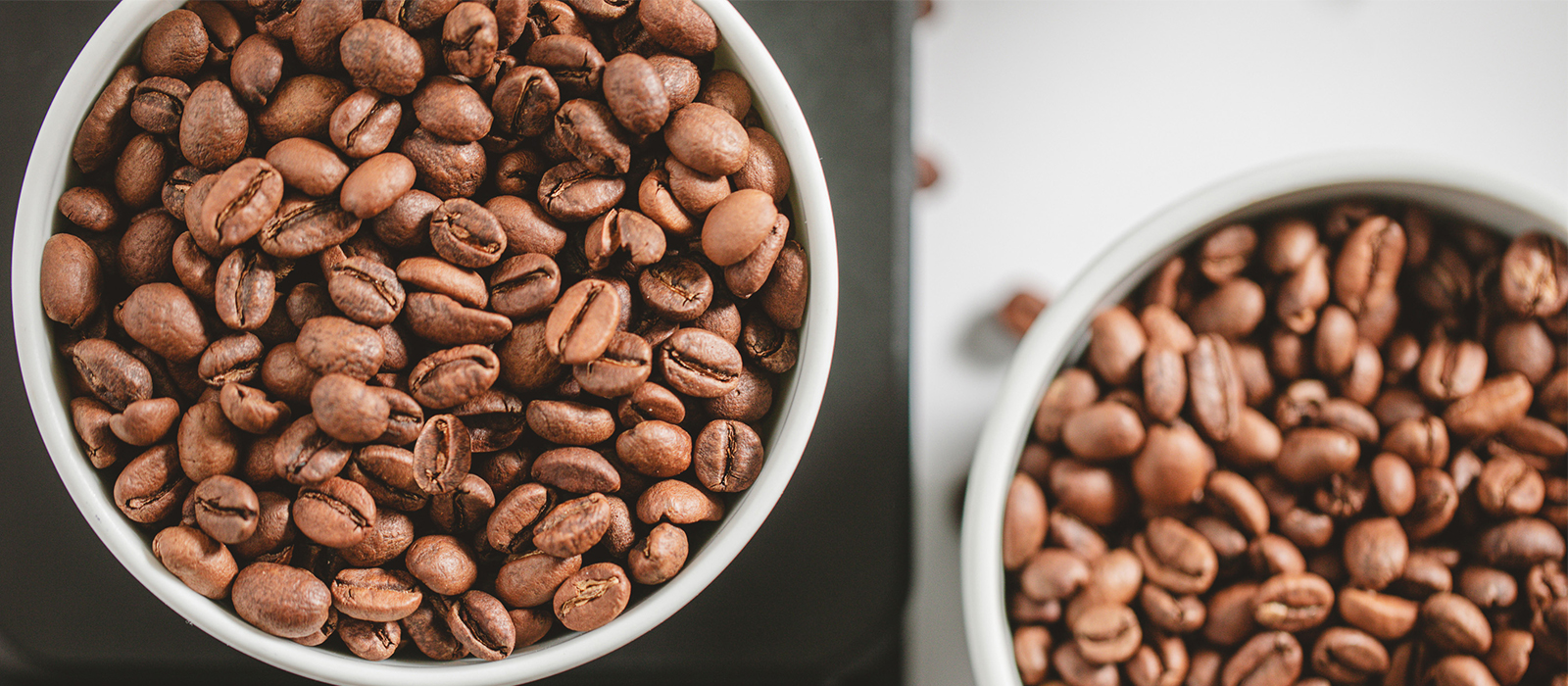
Credit: www.coffee-spirit.maxicoffee.uk
Sustainability Concerns
Understanding how many coffee beans per cup is essential for brewing the perfect coffee. But there’s more to consider beyond taste and aroma. Sustainability concerns play a crucial role in the coffee industry today. How coffee beans are sourced and their impact on the environment are significant factors that coffee lovers should be aware of.
Ethical Sourcing
Ethical sourcing ensures that coffee farmers receive fair compensation and work in safe conditions. It also means that the coffee is grown under sustainable practices that do not exploit the environment or labor.
When buying coffee, look for certifications such as:
- Fair Trade: Guarantees fair wages and working conditions for farmers.
- Rainforest Alliance: Focuses on sustainable farming and conservation.
- Organic: Indicates no synthetic pesticides or fertilizers were used.
These certifications help you make informed choices that support ethical practices. They also ensure a better quality of life for farmers and their communities.
Consider the following table for a quick overview of these certifications:
| Certification | Focus | Benefits |
|---|---|---|
| Fair Trade | Fair wages, safe conditions | Improved living standards for farmers |
| Rainforest Alliance | Sustainable farming, conservation | Environmental protection, biodiversity |
| Organic | No synthetic chemicals | Healthier soil, cleaner coffee |
By choosing ethically sourced coffee, you contribute to a more sustainable and equitable coffee industry. It not only benefits the farmers but also ensures a better future for the planet.
Environmental Impact
Coffee production can have a significant impact on the environment. From deforestation to water usage, the methods used to grow coffee affect the planet in many ways.
Here are some environmental concerns related to coffee farming:
- Deforestation: Clearing forests for coffee plantations destroys habitats and reduces biodiversity.
- Water Usage: Coffee farming requires a lot of water, which can deplete local water sources.
- Soil Degradation: Intensive farming practices can lead to soil erosion and loss of fertility.
Sustainable coffee farming practices can mitigate these issues. Shade-grown coffee, for example, involves growing coffee under the canopy of native trees. This method reduces deforestation and supports biodiversity.
Consider the following practices for sustainable coffee farming:
- Agroforestry: Integrates trees and shrubs into coffee plantations.
- Water Conservation: Uses efficient irrigation systems to reduce water usage.
- Organic Farming: Avoids synthetic chemicals, promoting healthier soil and ecosystems.
By supporting brands that use sustainable farming practices, you help reduce the environmental impact of coffee production. Every cup of coffee can make a difference.

Credit: www.pinterest.com
Frequently Asked Questions
How Many Coffee Beans For One Cup?
The standard measure is about 70 coffee beans for one cup. This equates to approximately 10 grams of coffee. Adjust according to your preference.
How To Measure Coffee Beans Per Cup?
Use a kitchen scale to measure 10 grams of coffee beans per cup. This ensures consistency and better flavor.
Does Bean Size Affect Cup Measurement?
Yes, bean size can affect the measurement. Smaller beans pack more densely, altering the weight. Always measure by weight.
Should I Grind Beans Before Measuring?
Yes, grind beans before measuring for accuracy. This ensures you get the right amount for your cup.
Conclusion
Finding the right number of coffee beans per cup is simple. Experiment to discover your perfect balance. Freshly ground beans always taste best. Start with 1 to 2 tablespoons of beans. Adjust based on your taste preference. Remember, quality beans make a difference.
Enjoy the process of making coffee. It’s more art than science. Happy brewing!
